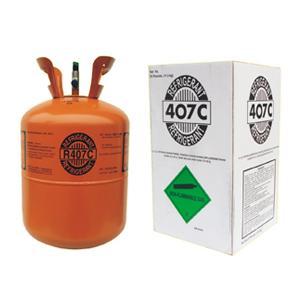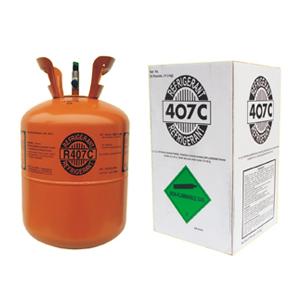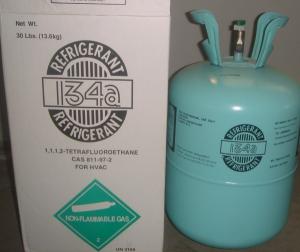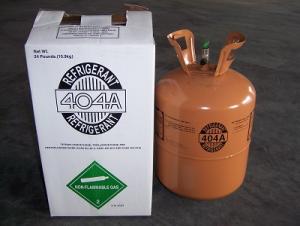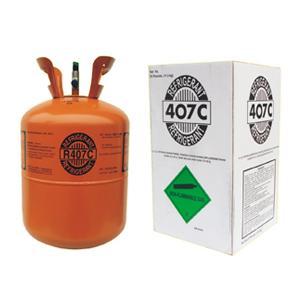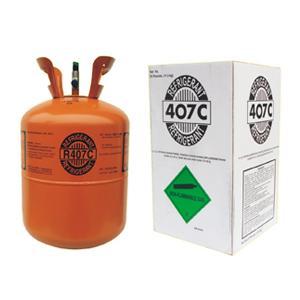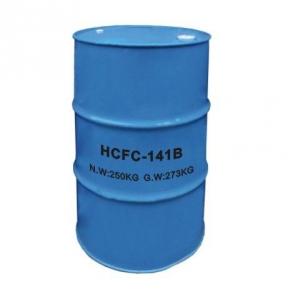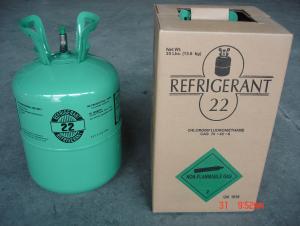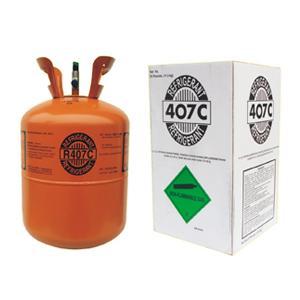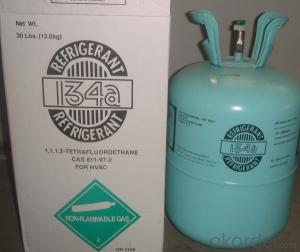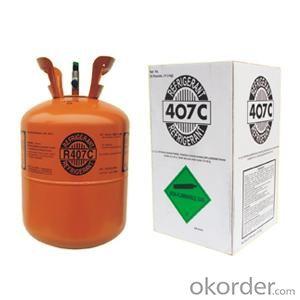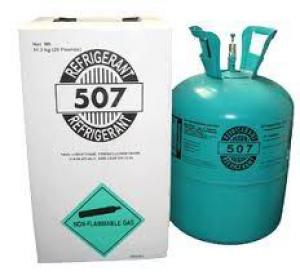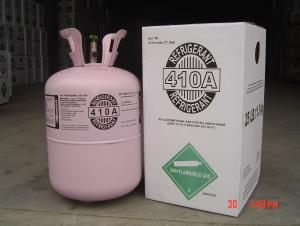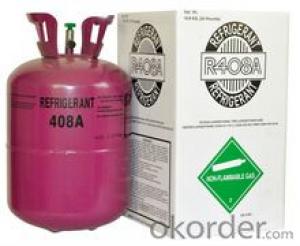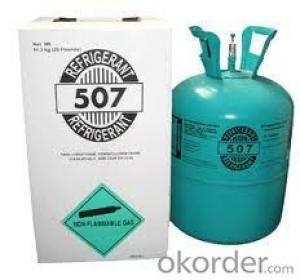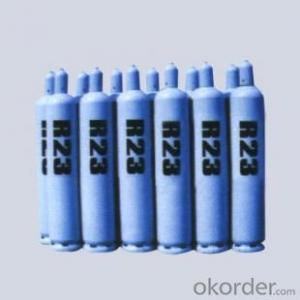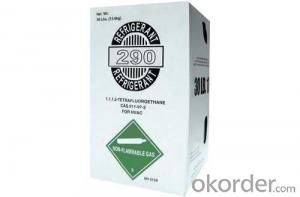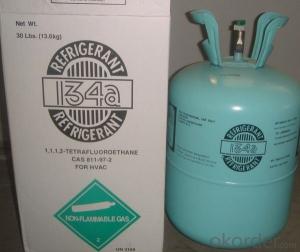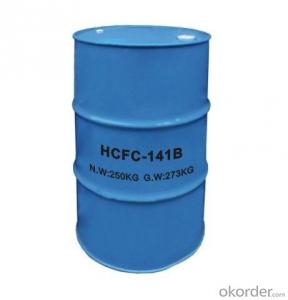Blend Refrigerant R407c Gas
- Loading Port:
- Ningbo
- Payment Terms:
- TT OR LC
- Min Order Qty:
- -
- Supply Capability:
- 1000MT m.t./month
OKorder Service Pledge
Quality Product, Order Online Tracking, Timely Delivery
OKorder Financial Service
Credit Rating, Credit Services, Credit Purchasing
You Might Also Like
Property of chloride : |
| ||||||||||||||
| Packing: | Disposable cylinder 25lb/11.3kg; Recyclable cylinder 400L, 926L; ISO-Tank. | ||||||||||||||
| Quality standard : |
| ||||||||||||||
R407C is a non zeotropic HFC replacement blend mainly used as a replacement for R-22 in air conditioning applications. (split systems, packaged air-conditioners or water chillers).
- Q: Is carbon monoxide an organic gas?
- Carbon dioxide is highly toxic. It is a strong ability to combine blood hemoglobin, which leads to cell hypoxia and suffocation. At present, if the trace carbon monoxide environment work, do not wear a gas mask and other necessary, it is recommended to eat more iron and calcium foods to reduce the harm to the body.
- Q: What is organic matter?
- Organic compounds (organic compounds) mainly by the oxygen elements, hydrogen, carbon elements. Organic matter is the material basis for life. Fat, amino acids, protein, sugar, heme, chlorophyll, enzymes, hormones and so on. Biological metabolism and biological genetic phenomena, are related to the transformation of organic compounds. In addition, many substances closely related to human life, such as oil, natural gas, cotton, dyes, chemical fiber, natural and synthetic drugs, are organic compounds.
- Q: Compare the difference between London smoke and Los Angeles photochemical smog
- Los Angeles photochemical smog nitrogen content and hydrocarbons and derivatives more, mainly close to the car exhaust. Foggy London situation related to coal, soot solid particles and sulfur oxide more. Foggy London is more bleak, and Los Angeles is more toxic.
- Q: Are all carbon compounds all organic?
- No, carbon dioxide and carbonates, bicarbonate is not it
- Q: Will AsH3 (arsenic trioxide) is organic or inorganic
- AsH3 (arsine trihydride) is not containing C element
- Q: Sodium can be used to identify derivatives of hydrocarbons
- The alcohol reacts with sodium. (Such as phenolic C6H5OH, cresol CH3C6H4OH, etc.), carboxylic acids (such as formic acid HCOOH, acetic acid CH3COOH, etc.) (description: hydroxyl groups in the carboxylic acid are hydroxyl groups in the carboxyl group) and hydroxyl groups containing polyhydroxyaldehydes and polyhydroxy ketones Such as glucose, fructose, etc.)
- Q: What are the characteristics of organic compounds?
- Organic compounds are usually referred to as carbon-containing compounds, or hydrocarbon-containing compounds and their derivatives are collectively referred to as organic matter. Organic compounds are generally insoluble in water and soluble in organic solvents with lower melting points. The vast majority of organic matter heat easily decomposed, easy to burn. The reaction of organic matter is generally slow and often accompanied by side effects, and there are many kinds of organic compounds, which can be divided into two major categories of hydrocarbon and hydrocarbon derivatives. According to the organic groups contained in the functional groups, divided into alkanes, alkenes, alkynes, aromatic hydrocarbons and alcohols, aldehydes, carboxylic acids, esters and so on. According to the organic carbon molecular structure, can also be divided into open chain compounds, carbocyclic compounds and heterocyclic compounds three categories.
- Q: Other corals are because the color of the corals show colorful, why only the red coral is the exception of it? did not find the reasons for the big god to explain
- Organic compounds, the general purpose of carbon compounds (carbon monoxide, carbon dioxide, carbonic acid, carbonate, metal carbide, cyanide excluded) or hydrocarbons and their derivatives.
- Q: Why not ah?
- A series of compounds in which a hydrogen atom in a hydrocarbon molecule is replaced by another atom or radical is called a derivative of a hydrocarbon
- Q: What is organic?
- Human beings have a long history of organic compounds. As early as the 17th century, humans could only obtain some organic compounds such as protein, fat, carbohydrate and dyes from animals and plants as food, food and clothing. 1828 German chemist Wilhelm (F Wohler) for the first time with inorganic acid ammonium nitrate synthesis of organic urea. After 1844, people have synthesized a large number of organic compounds such as methane, acetylene, acetic acid, oil and sugar, and since then humans have made organic chemistry into the synthetic era. The development of synthetic organic matter is clearly recognized: there is no clear boundary between organic matter and inorganic matter, but there are some differences in composition, structure and nature. Now people already know that organic compounds in the composition of most contain carbon, hydrogen, oxygen, nitrogen and other elements, a few also contain sulfur, phosphorus, halogen and so on. Any organic compound, its molecular composition contains carbon, the vast majority also contains hydrogen. Since the hydrogen atoms of the organic compound molecules can be replaced by other atoms or radicals, so many other organic compounds are derived, it is generally believed that hydrocarbons and their derivatives are known as organic compounds, referred to as organic compounds; The chemistry of compounds is called organic chemistry.
Send your message to us
Blend Refrigerant R407c Gas
- Loading Port:
- Ningbo
- Payment Terms:
- TT OR LC
- Min Order Qty:
- -
- Supply Capability:
- 1000MT m.t./month
OKorder Service Pledge
Quality Product, Order Online Tracking, Timely Delivery
OKorder Financial Service
Credit Rating, Credit Services, Credit Purchasing
Similar products
Hot products
Hot Searches
